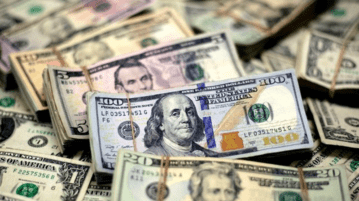Amid high expectations from PML-N led coalition government, we can only assume – All that glitters is not gold
The Pakistani Rupee has seen a sharp and uncontrolled fall against the US Dollar in recent weeks, hitting a record low value. It has been in freefall since the Shehbaz Sharif-led PDM Government took control, and there seems to be no end in sight. Forex reserves have plummeted from $17 billion six weeks ago to under $10 billion. The current account deficit will likely exceed $16 billion. The circular debt for power and gas is approaching Rs3,000 billion. This has caused immense problems for businesses and consumers alike, as the cost of imported goods continues to skyrocket. The government has been scrambling to try and stabilize the currency, but so far, their efforts have been unsuccessful.
The situation before Shehbaz Sharif took charge
When it comes to the Pakistani Rupee devaluing against US Dollar this was no news since the PTI took charge, back in 2018. Since then the Pakistani Rupee has devalued gradually, but this did not mean it will continue to do so in the future. In fact, there were many factors that suggested the Pakistani Rupee would actually appreciate against the US Dollar in the coming years.
One factor was Pakistan’s improving economy. The country’s GDP had been growing steadily in recent years and was expected to continue doing so. This strong economic growth would have helped support the Pakistani Rupee tremendously.
Another factor was Pakistan’s growing foreign currency reserves. The Pakistani Diaspora had played a crucial role in improving Pakistan’s foreign reserves. The PTI introduced the Roshan digital account for facilitating the smooth inflow of foreign exchange into the country. The country had been building up its foreign currency reserves in recent years. This had helped support the Pakistani Rupee and prevent it from devaluing further, especially amid the covid crisis.
Finally, Pakistan had been working to improve its relationship with China. The two countries have been strengthening their economic ties through various projects under the CPEC. This would have been positive for the Pakistani Rupee in the long term as China is a major trading partner of Pakistan.
Also Read:Missiles and missile defence in a nuclear Asia
Shehbaz Sharif has failed to secure any deal to support the economy with foreign assistance
The Pakistani Rupee has been gradually depreciating against the US Dollar since 2018, but the situation has only gotten worse in recent weeks. The dollar was at PKR 182 when the Shehbaz government took over and since then it has been in free fall, reaching the lowest ever value of PKR 200 in just a matter of days.
Despite the Pakistani government’s pleas for help, the International Monetary Fund has refused to provide any support. Furthermore, the visit to Saudi Arabia and the UAE was supposed to bring in billions of dollars to support the fragile state of the economy but that too ended in failure. The Rollover of USD 2.3 billion in Chinese commercial loans has also not been materialized yet. This is a major blow to the Pakistani economy, and it is clear that Shehbaz Sharif has failed to secure any kind of deal that would help stabilize the currency. The future looks very uncertain for Pakistan, and it is hard to see how this situation can be resolved without major changes to economic policy and political scenario.
The Pakistani Rupee has seen the fastest devaluation against US Dollar and has hit the record lowest value of all time
This devaluation has caused economic hardship for many people in Pakistan, as the cost of imported goods has risen sharply. The government has responded by making futile attempts to try and stabilize the currency, but so far these have not been successful.
The abolishment of the CPEC authority and the dwindling state of Pak-China relations in the current US regime-change operation has further put immense pressure on the economy by creating massive hindrances to economic activity. It is natural that it further puts pressure on the Pakistani Rupee.
On May 18 in Doha, Islamabad and the IMF are expected to begin policy-level negotiations, which will likely hinge on the removal of fuel subsidies in order to restart the program and prolong its duration by up to one year and increase its amount to USD 8 billion.
Investors were put off by the new government’s unwillingness to withdraw gasoline and power subsidies, which are required for the IMF program to be revived.
Furthermore, investors are concerned about the country’s declining foreign currency reserves since remittances and export revenues are insufficient to fulfill market demand, despite rising external debt payments and skyrocketing imports.
There is much speculation as to why the Pakistani Rupee has fallen so dramatically. Some say it is due to external factors such as the US-China trade war, while others blame the Pakistani government for poor economic management. Whatever the cause, there is no doubt that the situation is serious and could have far-reaching consequences for Pakistan’s economy.
Also Read: The final battle of Panipat








